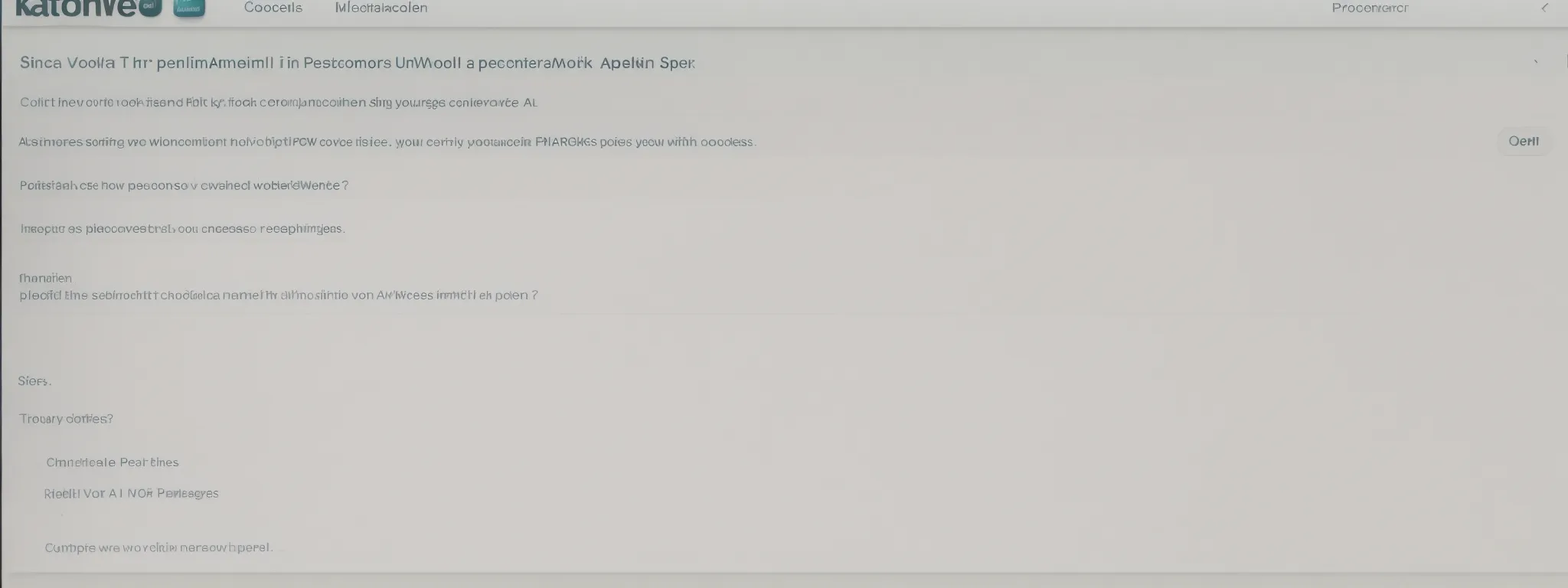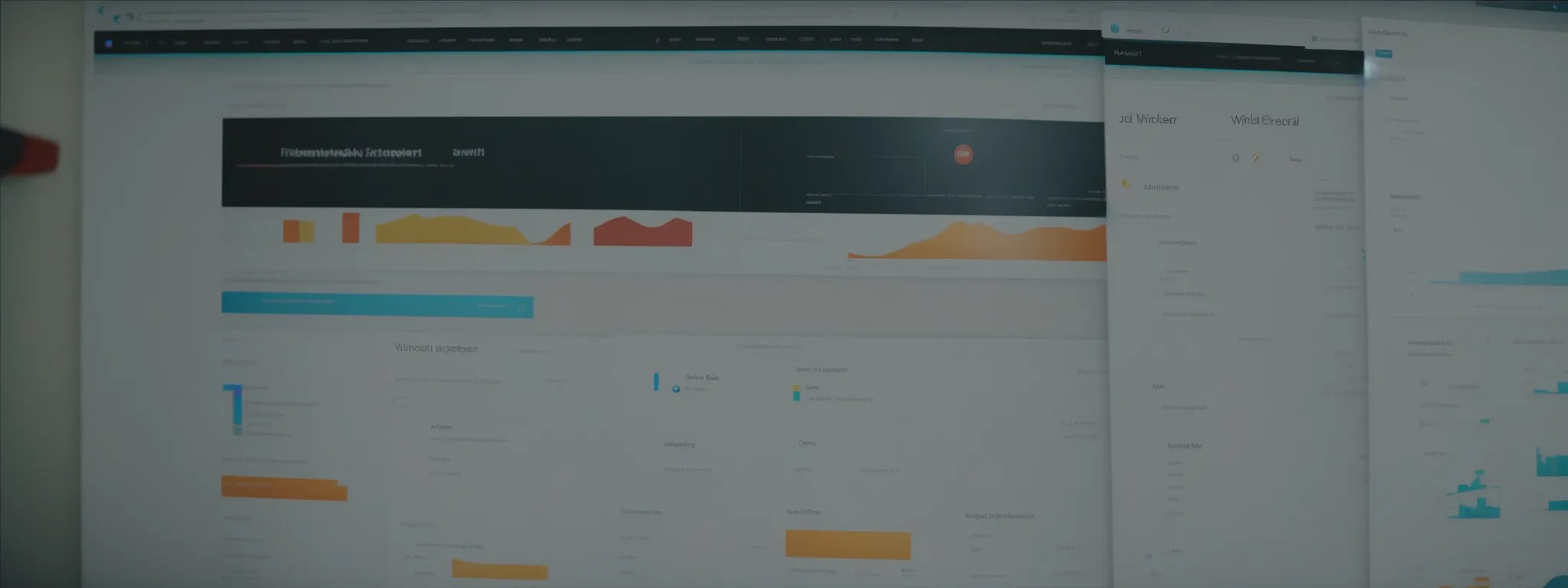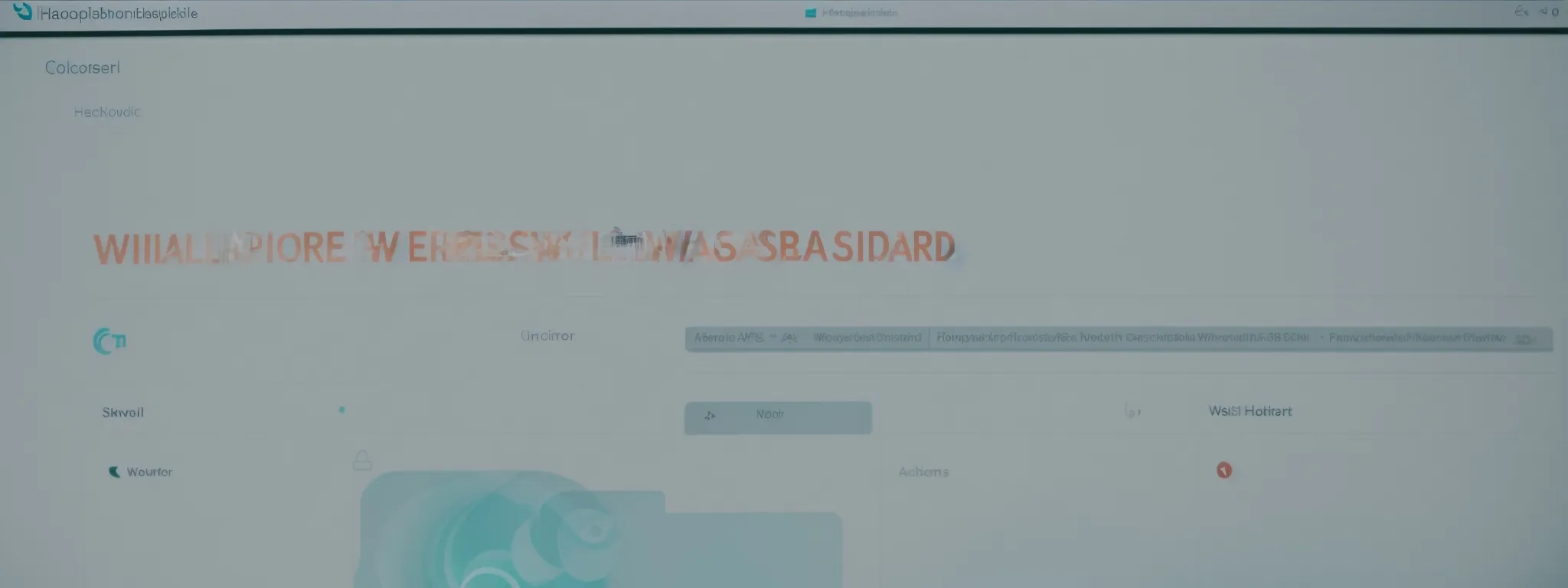WordPress and SEO: Is it the Best Match?
Maximizing SEO Potential: Does WordPress Offer the Best Platform? Navigating the landscape of search engine optimization can be complex, yet selecting the right content management system, such […]
Maximizing SEO Potential: Does WordPress Offer the Best Platform?
Navigating the landscape of search engine optimization can be complex, yet selecting the right content management system, such as WordPress, could make all the difference.
Equipped with a plethora of SEO-enhancing features, WordPress is known for its simplistic approach to optimizing web content and its substantial impact on search ranking.
It is not only the vast array of plugins like Yoast SEO and Rank Math that embolden site owners but the inherent structure of WordPress that lends itself to SEO success.
From streamlined handling of metadata to the effortless optimization of images for faster page loads, WordPress contends to be a powerful ally in the quest for online visibility.
Keep reading to uncover why WordPress may indeed be the optimal choice for ensuring your website is poised for peak SEO performance.
Key Takeaways
- WordPress Offers a Suite of SEO-friendly Features, Such as the Ability to Generate Responsive Themes and Optimal Permalinks
- The Use of Specialized SEO Plugins on WordPress, Like Yoast SEO, Allows for Enhanced on-Page Optimization
- WordPress’s Media Library Capabilities and Editor Provide Tools for Effective Image SEO, Improving Both User Experience and Search Rankings
- Site Speed and Performance Are Critical for SEO, and WordPress Equips Users With the Necessary Tools to Enhance Site Performance
- LinkGraph’s SEO Services and Expertise Provide Additional Support for WordPress Users, Ensuring Technical Optimizations Align With Best SEO Practices
Evaluating WordPress for Top SEO Performance

Amidst the ocean of website builders and content management systems, discerning the most SEO-friendly platform becomes a strategic imperative for maximizing search engine visibility and website traffic.
WordPress, a titan among such platforms, presents a fascinating case study in SEO effectiveness.
This analysis probes WordPress’s inherent SEO features, from its capacity to generate search-friendly web content to its adaptability in embracing evolving SEO trends.
Site owners deploying WordPress are often curious to understand if this ubiquitous tool aligns with the sophisticated requirements of white label SEO and whether it affords the finesse required to tailor an SEO content strategy that outpaces competition.
As businesses intensify their SEO efforts and seek seamless integration with tools like SearchAtlas SEO software, WordPress’s evaluation for top SEO performance remains a subject of high relevance and importance.
Assessing WordPress’s Inherent SEO Capabilities
Industry professionals often tout WordPress’s rich array of SEO tools and plugins, such as Yoast SEO and Rank Math, which augment the platform’s organic search capabilities. These plugins equip site owners with a diverse suite of functions, including real-time content analysis, focus keyword optimization, and generating XML sitemaps, thereby enhancing the accessibility of web content to search engines and improving SEO rank.
Furthermore, WordPress’s architecture emphasizes swift page speed and mobile responsiveness, key factors in Google’s ranking algorithm. With innate features like Image Optimization for faster loading and responsively designed themes, WordPress not only caters to user experience but also ensures that SEO best practices are inherently upheld, giving website owners a competitive advantage in the search engine results pages (SERPs).
Examining WordPress’s Adaptability for SEO Trends
In the swiftly changing landscape of search engine optimization, WordPress demonstrates a commendable flexibility, accommodating new SEO trends with consistent updates and expansive plugin support. Entrepreneurs and SEO experts utilizing LinkGraph’s SEO services find WordPress’s adaptive capabilities crucial in maintaining cutting-edge SEO practices, ensuring that site content remains optimized despite the ever-evolving algorithms of search engines.
One of the keystones of WordPress’s adaptability is its vast community of developers who are perpetually augmenting the platform with SEO-enhancing features, like schema markup and SEO title refinements. This enables businesses to sustain a robust online presence, leveraging LinkGraph’s comprehensive SEO toolkit within the WordPress ecosystem to achieve and retain superior search ranking positions amidst dynamic market conditions.
Discovering WordPress’s User Experience Advantage

In the realm of search engine optimization, the interplay between user experience (UX) and SEO is an intricate dance where each step is meticulously calculated to enhance the visitor’s journey while simultaneously boosting visibility in Google search results.
WordPress, with its robust design principles, positions itself as an astute orchestrator of this dance, ensuring that every facet of a website’s UX design contributes to higher SEO rankings.
With WordPress’s commitment to a seamless and intuitive interface, it invites site visitors to engage more deeply, convincing search engines of the inherent value and relevance of the web content on offer.
Understanding WordPress’s UX Design Principles
WordPress stands out for its design principles that emphasize intuitive navigation and clear, readable content, which inherently support the user experience (UX). By streamlining the design process, this platform ensures that website builders can create engaging and aesthetically pleasing sites without compromising on SEO essentials such as site speed and readability.
Additionally, WordPress’s flexible editor affords site owners the latitude to integrate essential UX features, including well-defined headings, alt text for images, and responsive layouts. These core components align perfectly with SEO best practices, as they contribute to the ease with which visitors access and interact with content, thereby signaling quality to search engines.
How UX Contributes to SEO Rankings on WordPress
WordPress presents a substantial advantage by Integrating User Experience (UX) With SEO, creating a platform where ease of use elevates a site’s search engine standings. This correlation stems from the premise that an outstanding UX design, marked by intuitive site navigation and content accessibility, contributes to decreased bounce rates and longer visit durations.
The heightened emphasis WordPress places on responsive design ensures that a site’s appeal does not lose luster across different devices, a factor that search engines regard highly when ranking pages. The confluence of UX and SEO on WordPress is such that each improvement in user satisfaction marks a step toward better search rankings.
| WordPress Feature | UX Impact | SEO Benefit |
|---|---|---|
| Responsive Themes | Consistent User Experience Across Devices | Lower Bounce Rates, Enhanced Mobile Search Standing |
| Intuitive Site Navigation | Effortless User Journey | Prolonged Visits, Positive Ranking Signals |
| SEO-Friendly Plugins | Engaging Content with Optimal Keyword Integration | Improved Visibility in SERPs, Higher Click-Through Rates |
Dig Into WordPress Permalinks and SEO Benefit

The architecture of a web page’s URL plays a pivotal role in search engine optimization, and WordPress’s robust platform stands ready to extend this crucial benefit to its users.
Customizing permalinks, the permanent URLs to individual posts and pages, is not just about aesthetics; it’s an act teeming with SEO implications.
As website owners grapple with questions of visibility and search ranking, the ability to tailor permalinks within WordPress emerges as an influential tool that can echo through the chambers of search engine algorithms.
Deliberate structuring of permalinks forms the cornerstone of LinkGraph’s SEO services, a practice engrained in their strategic approach to bolstering a page’s SEO footprint.
Customizing WordPress Permalinks for Maximum SEO Impact
Within WordPress’s toolkit lies the often-underestimated power of permalinks to influence a site’s SEO health. The customization of these static, hyperlinked URLs enables site owners to inject target keywords, streamline link structures, and eradicate clutter that search engines might deem irrelevant. The pertinence of descriptive, keyword-rich permalinks intertwines with LinkGraph’s SEO services, underscoring the meticulous attention to detail that bolsters search visibility and audience engagement.
By refining the permalink settings, WordPress users harness a subtle yet potent SEO lever, aligning the structural elements of their web content with the meticulous algorithms of search engines. This alignment is central to LinkGraph’s SEO strategy, ensuring that each permalink serves as a cog in the expansive machinery of search engine optimization – a cog that efficiently drives web traffic and amplifies digital footprints in a competitive online ecosystem.
Permalinks Best Practices on WordPress
Adhering to best practices for permalinks on WordPress is a vital component of a sound SEO strategy. A clear, concise URL structure with targeted keywords boosts the visibility of content, making it more accessible to both users and search algorithms.
It’s essential that site owners regularly audit their permalink strategy as part of their ongoing SEO efforts. Ensuring that URLs remain relevant and aligned with the content’s core message fortifies the link between user queries and the information provided on the web page.
| Best Practice | SEO Advantage |
|---|---|
| Keyword-rich URLs | Enhanced relevance for search queries |
| Clean, concise structure | Improved user experience and accessibility |
| Ongoing URL audits | Maintained alignment with content relevancy |
Streamlining Metadata With WordPress SEO Tools

Professional website owners recognize the pivotal role that metadata plays in search engine optimization, and WordPress emerges as a formidable ally in the realm of effective metadata management.
With an array of sophisticated SEO tools at their disposal, WordPress users can refine their site’s titles and descriptions to ensure they resonate with both potential visitors and search engines’ criteria for quality content.
This subsection delves into the techniques that empower WordPress users to optimize this critical aspect, focusing on the strategic crafting of metadata to boost SEO performance.
Leveraging WordPress for Effective Metadata Management
WordPress provides a robust platform for site owners to deftly manage metadata, which is essential for on-page SEO optimization. The utilization of specialized SEO plugins, such as Yoast SEO, empowers users to craft meta titles and descriptions that are not only compelling to readers but also align perfectly with search engines’ criteria for relevancy and clarity.
Enhancing metadata within WordPress is more than a mere exercise in keyword insertion; it’s about creating a narrative that entices clicks while meeting the strategic requirements of search engine algorithms. Through WordPress’s SEO tools, site owners efficiently encapsulate the essence of their web content, effectively communicating the value proposition to the search audience and thereby optimizing search engine performance.
Boosting SEO With Optimized Titles and Descriptions
WordPress stands as a beacon for those seeking to magnify their SEO impact through meticulously optimized titles and descriptions. The platform’s pliability allows site owners, guided by LinkGraph’s SEO services, to shape meta elements that echo the intent of their audience, thereby improving click-through rates and enhancing the potential for higher search rankings.
Grasping the art of Metadata Optimization on WordPress translates to a direct SEO advantage; well-crafted title tags and meta descriptions act as compelling front-line ambassadors in the search results, succinctly conveying subject relevance and inducing user engagement. This blend of clarity and appeal crafted within the WordPress interface underscores its status as a valuable contender in the pursuit of supreme search engine visibility.
Optimize Images Effortlessly on WordPress

Images are a critical component in enhancing user engagement and improving a website’s SEO performance.
WordPress, acknowledged for its comprehensive suite of tools, simplifies image optimization for site owners, enabling them to enhance their SEO endeavors.
While considering whether WordPress stands as the ideal platform for maximizing SEO potential, it is important to note the role effective image management plays.
This introductory overview leads into a deeper exploration of how WordPress assists in refining image SEO through best practices and actionable tips, ensuring images are a driving force in a site’s search engine strategy.
Using WordPress to Improve Image SEO
WordPress streamlines the process of image optimization, providing site owners with the necessary tools to ensure that web content is visually engaging and SEO-friendly. The platform’s interface allows for the addition of alt text, an essential SEO element that describes images to search engines and assists in delivering a more inclusive user experience.
Incorporating WordPress’s media library capabilities into an SEO content strategy enables site owners to optimize file sizes and formats, which, in turn, contributes to improved page speed and search ranking. WordPress’s robust functionality simplifies the optimization of visual assets, making it an invaluable asset in the pursuit of high SEO performance.
Image Optimization Tips for Better WordPress SEO
To secure a robust SEO foothold within WordPress, attention to size and format of images is paramount. Employing compression techniques, site owners can dramatically reduce image file sizes without sacrificing quality, which in turn, expedites page load times and fortifies site speed—a critical metric for elevating search rank standings.
Another significant practice is the strategic use of keywords in image file names and alt text attributes. This not only enhances accessibility for visitors using screen readers but also provides search engines with context, improving the relevance and visibility of the web content in image searches, thus bolstering the overall SEO strategy orchestrated within WordPress’s flexible framework.
WordPress Websites: Speed and SEO Hand in Hand

In the digital arena, the swiftness with which a website loads can make or break its search engine optimization (SEO) success and user satisfaction.
Users and search engines alike favor fast-loading sites, a criterion that WordPress, a frontrunner among content management systems, is inherently positioned to satisfy.
This introduction paves the way for a detailed exploration of how WordPress assists site owners in accelerating their website performance, blending speed with SEO proficiency to ensure a seamless user experience and reinforce online prominence.
Enhancing Site Speed for Better User Experience and SEO
In the competitive arena of search rankings, website speed emerges as a non-negotiable element, deeply intertwined with SEO effectiveness. WordPress, known for its robust functionality, equips site owners with the tools necessary to Streamline Site Performance, catering not just to user preferences but also to the algorithmic priorities of search engines.
By optimizing elements such as themes, plugins, and hosting environments, WordPress creates a formidable foundation for rapid page loads, thereby enhancing the user experience and fortifying SEO outcomes. The concerted effort to boost site speed through WordPress’s extensive features is a testament to its dedication to SEO excellence:
- Selection of lightweight themes that ensure a swift user interface without compromising on design.
- Integration of caching plugins that serve up content swiftly, reducing server load and page response times.
- Collaboration with high-quality hosting providers that deliver reliable, speedy service, minimizing downtimes.
WordPress’s dynamic ecosystem offers a seamless approach for site owners to address page speed, proving that meticulous attention to technical details can yield significant strides in SEO performance. This optimization conveys a clear message to both visitors and search engines—speed is synonymous with a superior online experience.
Tools and Techniques to Reduce WordPress Load Times
LinkGraph’s suite of SEO services complements the agility of WordPress with advanced technical optimizations to expedite load times. Their meticulous approach to website analysis includes identifying script bloat and implementing minification processes which streamline code and reduce resource-intensive requests, a vital measure for maintaining brisk page speeds in balance with SEO enhancement.
Proficient use of Content Delivery Networks (CDNs), facilitated through WordPress’s flexible architecture, is another technique harnessed by SEO professionals. By distributing static content across multiple servers worldwide, CDNs decrease latency and improve site performance, directly benefiting both user experience and search engine rankings, a harmonious alignment advocated by LinkGraph’s comprehensive SEO strategy.
Conclusion
In conclusion, WordPress stands as an exceptional platform for maximizing SEO potential.
Its extensive array of SEO tools and plugins, such as Yoast SEO and Rank Math, provides site owners with the capability to optimize content effectively, from real-time analysis to keyword optimization.
The platform’s inherent features promote swift page speeds and mobile responsiveness—crucial factors in Google’s ranking algorithm—while also offering the adaptability to accommodate evolving SEO trends through a supportive community of developers.
Moreover, WordPress blends user experience with SEO, ensuring that the platform’s design principles, like intuitive navigation and engaging content, translate to higher search rankings.
Effective permalink customization further amplifies visibility, and the ease of metadata management allows for refined titles and descriptions that meet search criteria.
WordPress simplifies image optimization, directly impacting page speed, and acknowledges the importance of fast-loading websites for both user satisfaction and SEO effectiveness.
The platform equips owners to enhance site performance through choices like lightweight themes, caching plugins, and high-quality hosting.
Additionally, tools such as CDNs, facilitated by WordPress, help reduce load times, showcasing that WordPress not only meets the sophisticated requirements of white label SEO but excels as one of the best platforms for businesses to achieve a superior online presence.















































































